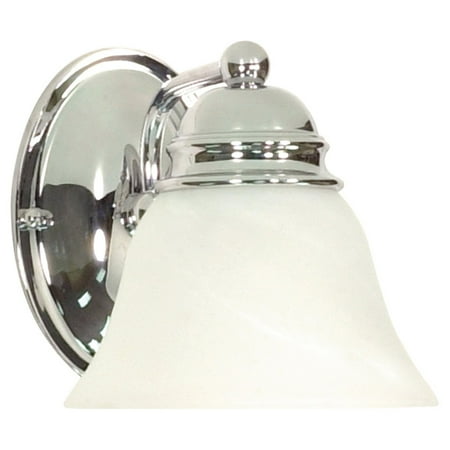Lighting is among the most vital aspects of your interior because it can, in addition to illuminating a room it can transform the style of the room for better or worse. On the one hand, it can turn a drab room into a glossy-magazine-worthy space with the simple flick of a switch or, on the other, it can under- or over-illuminate resulting in headaches, tired eyes and lighting fatigue. The late, renowned American interior designer Albert Hadley once intimated, "Design is defined by shade and light, and appropriate lighting is enormously important." This luxurious guide to lighting will lead you through the many various lighting styles and offer expert ideas on how to arrange the lighting in your home's interior.
Light Types
The first step is to be aware of the distinction between artificial and natural lighting.
1. Natural Light
The sun is the best natural light source. It's stimulating to the mind and is completely free. However, it is difficult to manage. Lighting will vary depending the location you live in. For example the north-facing light is much more intense than south-facing. The season and time of day can affect the amount of sunlight the room receives. Window treatments can be a way to reduce the amount of natural light. Sara Cosgrove is an interior designer who suggests "sheers and window treatments and mirrors" for rooms that have less natural light. Mirrored furniture such as the Carina Bedside Cabinet, is also a good option and offers storage space. If you have a room which is awash in natural sunlight, lined drapes are a good option in heavier fabrics to limit the amount of light that enters your home. The issue of glare should be taken into consideration. A room that is too bright may appear flat and cold. A window treatment that is able to be changed (such as louver, venetian roman blinds or slats) will help control sunlight and prevent glare. However, it won't affect the beauty of the window. Combustion light (i.e. Firelight and candle are excellent sources of natural light. The addition of a fireplace creates this cozy reception space even more attractive. The exquisite candlesticks and the candelabra used to hold statuesque tapers look stunning on the mantlepieces as well as on the end of formal dining tables. To create a casual style, you can use lanterns or hurricanes to enjoy the warmth of candlelight either outside or inside.

2. Artificial Light
Artificial lighting is suggested to add a sense of warmth to the space with layers. A warm light is more inviting than a bright light. Artificial lighting can enhance the interior design style of the space by highlighting certain particular features, creating zones, and altering the impression of proportions. Keep in mind the five categories of lighting (below) when planning your lighting scheme. To achieve the desired look take note of where you are going to place it and the way you'll utilize it.
Here Are 5 Types Of Interior Light
There are five kinds of interior lighting including ambient, general and mood. Accent, task, mood, task, and task are the most common types. Certain lights may fall into a variety of types based on their location, brightness, and their use. It is beneficial to be aware of each kind to help you create a successful scheme.
A. General Lighting
General lighting forms the basic base of a lighting plan which provides a uniform glow over an entire room and lighting a space for practical reasons rather than for aesthetic reasons. General lighting should be focused. To adjust for changes in light, a dimmer switch must be utilized. The central pendant lighting source is the one that is the most frequently used and crucial element in a room's design. A chandelier that is luxurious as well as an artful installation can create stunning visual effects within a room and also draw the eye. But, they should be complemented by other lighting elements. The main light source itself casts shadows that are not flattering (especially to people) and doesn't give a room any real life. An inadequate lighting scheme to create a welcoming space is often deemed to be too simplistic. See the best cerno lamps review.

B. Accent Lighting
Accent lighting is similar in its function to task lighting. This refers to any lighting system that is specifically designed to highlight certain features within a room. Accent lighting is a way to highlight sculptures, art or objects that are placed in pedestals or cabinets. It helps highlight art pieces and avoid them becoming lost in a dark space. Accent lighting has a lot in common with its demands as task lighting. But accent lighting consumes more luminos than task lighting. It also requires a higher amount of wattage since it has distinct characteristics. Ambient lighting is sometimes employed for accent lighting. Accent architectural lighting tends to be a little more subdued, highlighting textures and defining the perimeters of an object. See the best Pablo designs review.
C. Ambient Lighting
Ambient lighting is the second layer of lighting. It's an ideal complement to the general lighting. Both types share important characteristics--they're primarily functional and used to light a complete area. They differ in the direction that they emit light. April Russell, interior designer and author of April Russell's Interior Design Guide, explains the distinction in terms of "general lighting" This is a practical lighting that can be utilized in the day and at night. Ambience lighting is linked to the dimming control system which lets you set the suitable levels of light for any event. Ambience lighting is typically utilized to entertain. It creates drama. You can, for instance, use eyeball spotlights to illuminate walls, concealed coffer lighting, or backlit Perspex panels to reflect light onto ceilings. The ambient lighting in this room can be considered an example of architectural light, which can be used to alter the appearance and dimensions of a room. This room without windows would feel dark and confining. Check out most popular Z Bar recommendations.

D. Task Lighting
Task lighting, as the name implies, is a light source that is used for a specific purpose such as cooking or reading. They must have greater wattage that other lighting. They should be paired with sufficient ambient lighting to reduce eye strain from the sharp contrast between light and dark areas. Elicyon's home office is a good illustration of the areas that require task lighting. If you want to read in bed, flexible lighting for reading near a headboard make a great selection. Mirror lighting is a popular option in bathrooms and personal grooming areas. Task lighting is essential for cooking. There are a variety of ways to light the kitchen. They include downlights that are recessed above the worktops, under-cabinet spotlights , and an overhead light that is hung low above a prep area. A task light can be used to create foot flow paths within an area or hallway. Check out top Umage Lights brands.
E. Mood Lighting
The lighting of mood is equally important to a room's overall appearance as general and ambient lighting. Without it, the space will appear empty. The room will appear more welcoming by providing light sources to offset shadows caused by general lighting. It's an essential part of a room’s style. Because it tends not to be as much about the function, but rather with its appearance and style, it's equally important. As Jean-Louis Deniot's Parisian living room design demonstrates tables lamps and a floor lamps are the most popular options. If you're in search of table lamps, a sturdy sidetable or console is the ideal choice. It's difficult to conceal wires. Connect wires through a discrete hole that has been drilled into the top or tie them to a leg. You should keep plug sockets close to the lighting fixtures. This is another reason to put off electrical plan until later in your design process. A filter is necessary to reduce the glare created by bulbs that are not fully lit. This is because lighting for mood is typically at eye level. If the bulb that is bare is evident from the ground, it's also important to cover your general or ambient lighting.
In Summary
CasaDiLuce There are many options to choose from for high-end lighting. Before making a decision, ask these tips above. CasaDiLuce.ca offers a variety of lighting fixtures that can assist you in creating the perfect atmosphere. Want to learn more? CasaDiLuce.ca is an online lighting store which offers Toronto products.
